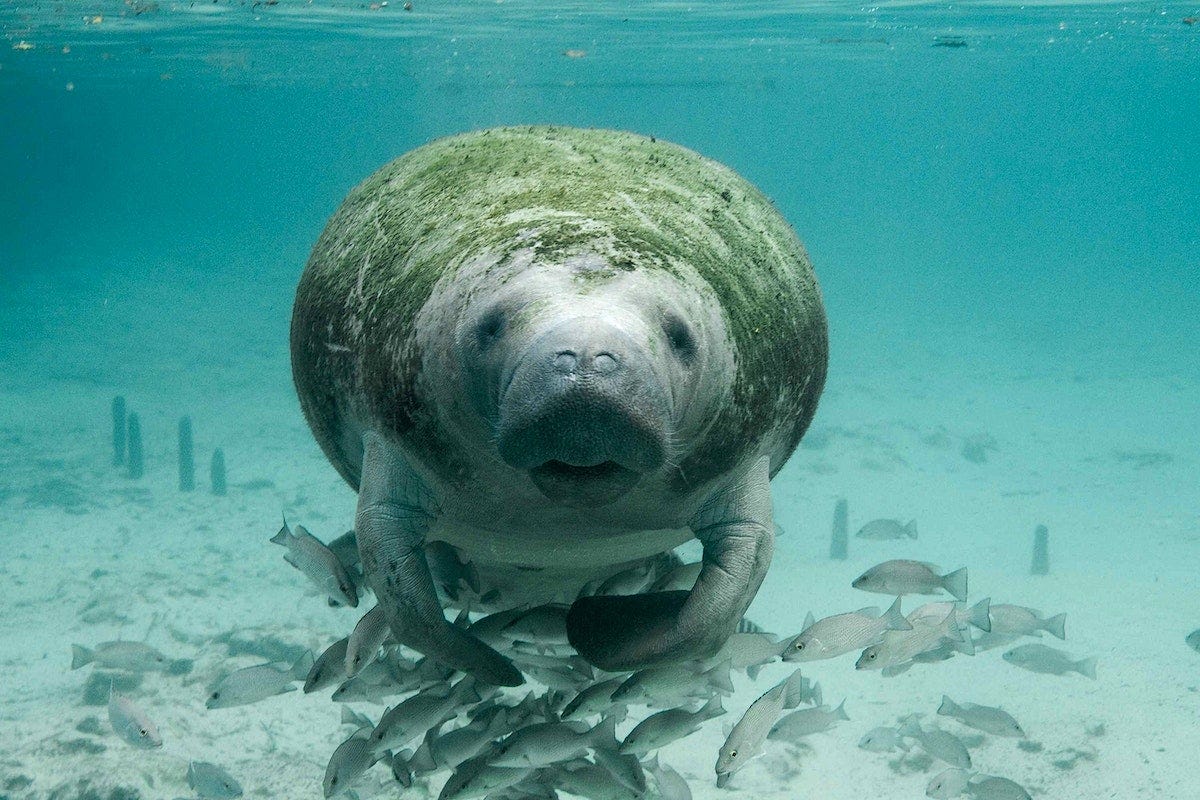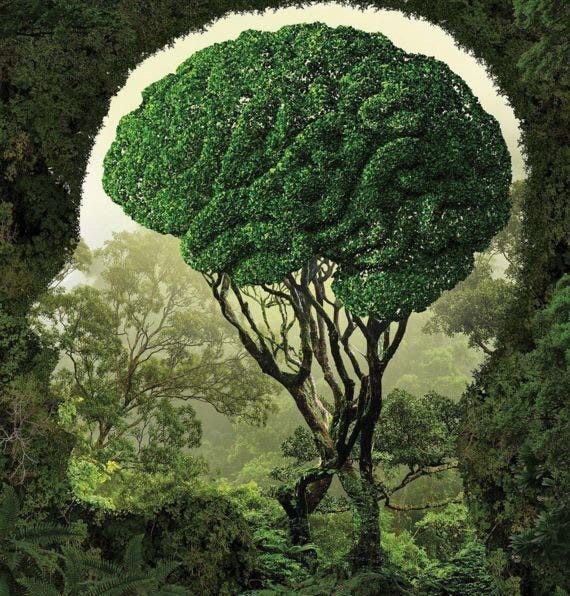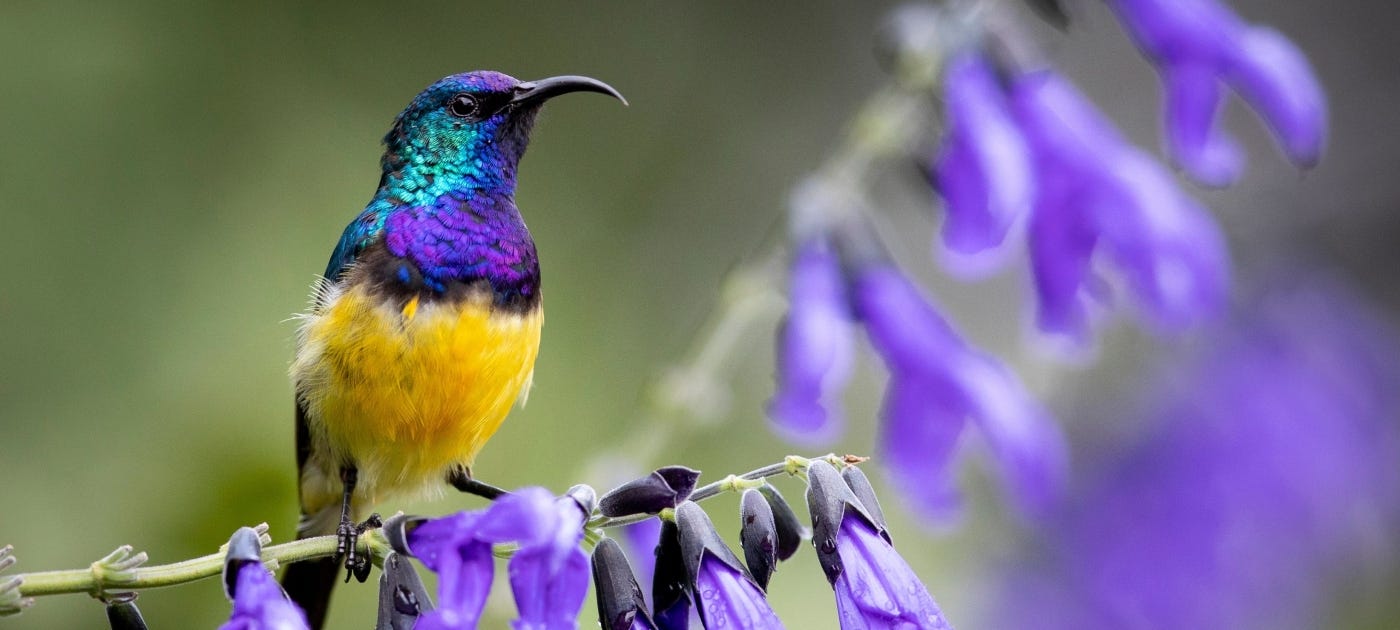The To-Do (List) in Montreal
12/15/22 – Some thoughts on the difficult work at COP15 to save Earth’s biodiversity

Hello everyone:
For anyone excited, or at least intrigued, by the latest breakthrough in fusion research, I suggest you read “The Sun Within,” my essay on fusion from last year. And to see a fusion reactor at work powering the globe, I suggest you go outside and enjoy the warmth of the sun.
As always, please remember to scroll past the end of the essay to read some curated Anthropocene news.
Now on to this week’s writing:
I’ll start this week with a quick follow-up to my essay of two weeks ago on the prevalence of corporate AI and its consequences for life. While I wasn’t writing about computational (computer-based) AI, it’s quite relevant to the Anthropocene. Why? First, because the unholy combination of selfish corporate AI and advanced computational AI has already radically transformed our algorithm-driven lives, and second, because computational AI is very much in the news recently, particularly with the arrival of ChatGPT, an astonishingly competent AI you can talk with online.
But it’s a seven-year-old essay from Aeon that got my attention, because the author makes a very good case for a very disruptive idea: the brain is nothing at all like a computer. “Your brain does not process information, retrieve knowledge, or store memories,” writes Robert Epstein. (Here’s a more recent concurring article too.) Yet every metaphor we have for how our brains work is based in this false assumption. This isn’t too surprising, given that in the industrial age we likened cognition to the movement of gears. Our thinking is always limited by the metaphors of the moment.
This seems yet another reminder, as global representatives gather in Montreal to determine the fate of Earth’s living systems, that we need to build a future around the actual similarity between human and other organic intelligences. For all the distance we pretend exists between our minds and those of turtles and dugongs, they are much closer kin than the processors we spend far more time with.
Like a drunk behind the wheel, we wield this false computer/mind metaphor to tell ourselves how we got here (so far from the natural world) and how we think we’ll get home. But it’s a myth that needs replacing with a truer tale, one in which we walk through the world in bodies which are in close relationship with plants, animals, and the forces of life.
I’m not saying we should burn the machines (although after hours of staring at this screen the idea seems at least worth considering). After all, we are increasingly living in relationship with these artificial intelligences too. As I noted two weeks ago, I’m advocating for what James Bridle in Ways of Being calls “an ecology of technology” in one of the most rational paragraphs I’ve read in a very long time:
If we are to address the wholesale despoliation of the planet, and our growing helplessness in the face of vast computational power, then we must find ways to reconcile our technological prowess and sense of human uniqueness with an earthy sensibility and an attentiveness to the interconnectiveness of all things. We must learn to live with the world, rather than seek to dominate it. In short, we must discover an ecology of technology.
As I’ve often noted, the must-not-fail civilizational to-do list is daunting, even for optimists. But if your assessment of the climate crisis gives you the jitters, wait until you try to wrap your head around the difficulty of the COP15 discussions happening right now in Montreal. I’ll give you a small taste here, which is about as much as I can handle.
The task of the Global Biodiversity Framework (GBF), which is the action plan for the Convention on Biological Diversity (CBD), is to map out the goals and targets necessary to protect and revitalize the natural world.
Put another way, the task is to end and then reverse much of the non-climate-related destruction of life in the Anthropocene. If you try to conjure up all the reasons for the extinction crisis, all the drivers of habitat loss, all the harms from industrial agriculture, etc., and then think about how to structure solutions at every level from transnational to local, and then think about how to finance all of it while creating measurable benchmarks to keep the world’s nations and corporations on task and honest about their progress, you get a sense of how insanely difficult the job is.
Which means, at least in my humble opinion, that protecting the tapestry of life will be quite a bit more complicated than managing the climate crisis. I don’t know if it’s more difficult, given the entrenched powers profiting from an overheated atmosphere, but it certainly seems more complicated. Some of you may have good arguments to the contrary, so feel free to offer them up in the comments. The answer to that debate, it should be said, will be that both are equally critical and neither can be solved without the other.
The good news is that wonderful, brilliant people from across the spectrum of governments, scientific institutions, conservation groups and elsewhere have been quietly working on this for years. 20,000 of them are in Montreal right now, including representatives from 200 countries. It’s the largest such gathering in history.
The bad news is that the work is still quiet, rather than front and center in everyone’s lives in the way that the climate work has now become. Only one world leader, Justin Trudeau, has attended COP15 so far, and that’s only because he lives down the street. We’ll see if anyone else shows up.
Also, the work hasn’t been working. Parties to the CBD (every U.N. member nation but the U.S.) committed in 2002 to significantly reduce by 2010 the rate of biodiversity loss. That didn’t happen. In 2010 the parties met in Japan and agreed to the 20 Aichi Targets, but none of those have been met either. In 2018, at the UN biodiversity conference, all the parties agreed to develop new targets under a post-2020 Global Biodiversity Framework to replace the Aichi Targets. That’s where we are now, with many wildlife populations still in freefall.
Which is sort of where the climate conferences are too – decades of insufficient progress – except that the climate activists and policy makers have set a clear, simple goal that every human on Earth can understand: Keep warming below 1.5°C to maintain a (mostly) stable world.
What’s the equivalent for biodiversity? Conceptual slogans with a measurable component might be helpful: No More Extinctions!, or Green the Red List!. Or maybe we could demand that biodiversity numbers should be resuscitated back to levels last seen a century ago. But none of those have the elegance and resonance of 1.5°C.
The strongest candidate, and one of the more difficult sticking points in Montreal right now, is an agreement to mandate the conservation of 30% of global land- and water-based habitats by 2030. This has the catchy slogan of “30 by 30” (written as 30x30). Going into COP15, more than 100 countries support 30x30 as a suitable target. But the obstacles to 30x30 as a coherent, attainable, meaningful goal are many:
What does “conservation” look like? What human uses of protected habitats are acceptable? Bottom trawling, sustainable logging, Indigenous communities, tourism? Will countries fall into the counterproductive trap of “fortress conservation,” in which even Indigenous and other local peoples are removed to maximize ecological benefits? Some Indigenous peoples support 30x30, while others fear its consequences.
Are plant, animals, and ecosystems always best-served by large-scale conservation? Often, key biodiverse areas are small and less politically interesting. Areas to be conserved must be determined by their ecological value, not their size.
What benchmarks for progress are most effective?
What are the expectations for wealthy countries who have lost too much biodiversity to reach the 30% mark? What development constraints will be placed on poor and less developed countries which are still rich in biodiversity?
Will the emphasis on a set amount of protected area create a perverse incentive to exploit everything else?
The kicker in this discussion of 30x30 is that, by many analyses, 30% won’t be enough. The great E.O. Wilson’s legacy Half-Earth project is probably a better bet for safeguarding enough biodiversity. But aiming for 30x30, if managed rationally, would be an amazing push in the right direction. For a comprehensive, illustrated, and readable assessment of where global conservation is right now, check out the 2020 report from Protected Planet.

A new Yale e360 article cites some other targets on the table in Montreal:
As well as pledging to put 30 percent of land and sea under protection, the draft text of the Global Biodiversity Framework being discussed at the Montreal Conference of the Parties to the UN’s Convention on Biological Diversity (COP15) also calls for 20 percent of damaged ecosystems to be “under restoration,” reducing alien species invasions by 50 percent, and establishing a funding stream of $200 billion per year to do it all.
Add to these a few more targets, like mandating a step-by-step reduction in pesticide use and fertilizer run-off in agriculture, and prioritizing nature-based solutions to climate change. I have to say, it thrills me to imagine a world in which these goals are actively pursued at the required scale. People of the world inspired (and paid) to restore and rewild habitat? Industrial agriculture called to task because of its harms to biodiversity? Nations actively reducing the global catastrophe of human-introduced invasive species? A financial system structured in part around healing the natural world? That’s what an ecologically-minded civilization looks like.
Yet for the moment we’re still living in a capital-minded civilization which has a predatory relationship with ecology. And the financing debates at COP15 are at the heart of the matter. Again, the biodiversity crisis mirrors the climate crisis, in that the nations, banks, and corporations most responsible for the capital-driven destruction of life are the entities most fit to finance the solutions. So far, most are loathe to do much beyond offering green platitudes while prolonging the “success” they’ve enjoyed in creating the problems.
There is some good news on the financing front. Just yesterday, as the large bank HSBC announced that they will no longer provide financing for new oil and gas fields, the UNPRI (the U.N.-backed Principles for Responsible Investment) “have called on world leaders to adopt an ambitious post-2020 Global Biodiversity Framework at the UN Biodiversity Conference COP15.” I don’t have a sense of how important or effective this announcement is, so for now I’ll just note that the UNPRI represents 150 financial institutions around the world with combined assets of more than $24 trillion. Let’s hope they do more than announce things.
The financing debates in Montreal are complicated and multifaceted. There is talk of “debt for nature” swaps, in which developing nations with hard-to-pay loans from the World Bank or other lending institutions have some debt forgiven as payment for conserving biodiverse habitats. There’s talk of pushing private finance to stop investing in projects that are especially harmful to biodiverse regions. And there’s a lot of talk about reforming the harmful governmental subsidies that underwrite the most far-reaching and egregious destruction of nature.
As a Narwhal article explains, the world spends at least $1.8 trillion per year on subsidies that drive the erasure of ecosystems and the extinction of species. As George Monbiot lays out in a new Guardian op-ed, the three big destroying industries are fossil fuels, fishing, and farming.
In 2021, governments directly subsidised oil and gas production to the tune of $64bn (£53bn), and spent a further $531bn (£443bn) on keeping fossil fuel prices low. The latest figures for fisheries, from 2018, suggest that global subsidies for the sector amount to $35bn a year, over 80% of which go to large-scale industrial fishing. Most are paid to “enhance capacity”: In other words, to help the industry, as marine ecosystems collapse, catch more fish… Every year, governments spend $500bn on farm subsidies, the great majority of which pay no regard to environmental protection. Even the payments that claim to do so often inflict more harm than good.
In fact, most governments spend far more on harmful subsidies that destroy nature than they do on financing conservation. From a problem-solving standpoint, this is easy money and powerful leverage. If much of that $1.8 trillion can be eliminated, or more likely reformed so that verifiable protection of biodiversity is required to receive the funds, it would be a game-changer. But one main reason these industries receive so much free money is because of their political power, which Monbiot explains is due to the “pollution paradox:”
The more damaging the commercial enterprise, the more money it must spend on politics to ensure it’s not regulated out of existence. As a result, politics comes to be dominated by the most damaging commercial enterprises.
The GBF draft framework calls for raising an annual $200 billion, or 1% of the world's GDP, for conservation by 2030. Another $500 billion per year would come from doing away with the worst subsidies. This is money that would, ideally, be flowing in a transparent and effective way to low-income nations who will need the support if they are to shape their development in the ecologically-sensitive ways wealthy nations never did.
This is all enormously expensive, but not nearly as pricey as the status quo accelerating loss of the natural world. A Times article, “Animals are Running Out of Places to Live,” cites the World Economic Forum finding that “$44 trillion of economic value generation is ‘moderately or highly dependent on nature and its services and is therefore exposed to nature loss.’”
Maybe the 20,000 good souls gathered in Montreal will provide a “Paris agreement for nature” in the next few days. We need it, and we need it to be strong and effective. The IUCN reports that 28% of wild plants and animals are threatened with extinction. The extinction rate is already about 1,000 times higher than it should be. Insect populations are collapsing. Human population hit 8 billion recently and, because we have not yet truly understood that our demography and global ecology are deeply entwined, is still increasing by a million every five days.
For one final insight into the to-do list in Montreal, here's a single paragraph from the working draft of the Global Biodiversity Framework from last June. It’s a 27-page document, and many of the paragraphs look like this. The bracketed terms and phrases represent variations suggested by the many parties involved. To some extent, this is the result of too many parties having the right to edit, but it also highlights the stark differences in what parties want as they set the goals and targets of a document meant, quite literally, to save life on Earth. This is from page 13, Goal A:
[Beginning now,] the human-induced extinction of [all] [known] [threatened] species is halted [by 2030][by 2050], [[and] extinction risk is reduced [by at least [10] [20] [25] per cent] by 2030 and [eliminated][reduced [to a minimum] [by 50 per cent]] [halved] by 2050,] and the [conservation status] [average population] [abundance] [and distribution] of [depleted populations of] all [wild and domesticated] [native] [threatened] species is [increased [or maintained] by at least [10] [20] per cent by 2030 and] [increased to healthy and resilient levels by 2050].
I’ve hardly scratched the surface of the GBF, the CBD, and what’s actually going on in Montreal. But I hope I’ve provided some perspective on the scale of the task.
With both the holidays and biodiversity in mind, you might want to send some support along to one of the organizations in Montreal fighting for a healthier planet. There is no shortage of options, of course, from the Center for Biological Diversity to the World Wildlife Fund.
Or, on a local level, you might give to the chronically underfunded wildlife rehabilitators who look after your window-stunned bird, your lawnmower-sliced turtle, your car-struck rabbit. Here’s a good Times op-ed on the human kindness that underpins wildlife rehabilitation, and here is a resource for finding rehabilitators in your neighborhood. Give generously if you can; unlike many of us, they’re devoting their lives to wildlife.
Finally, remember that the December solstice will be at 4:47 PM (EST) on Wednesday the 21st. It’s a time of stillness and of celebration, of marking the planetary love affair with that fusion reaction 91.5 million miles away. In this era of unnecessary chaos that we call the Anthropocene, a moment to mark such existential stability seems like a good idea. Heather and I will have a drink around the campfire. How about you?
Thanks for sticking with me.
In other Anthropocene news:
Some really heartening news from Our World in Data about the comeback of mammal species in Europe. Topping the list are the Eurasian beaver and the European bison, which have both increased their population since 1960 by over 16,000%.
Want to see a map of life? To see the splendor of biodiversity mapped in several ways to educate and fascinate you? Check out the Map of Life. You can explore by location, species, biodiversity projects, data sets, and more.
Would a four-day work week reduce your carbon footprint? Here’s a thoughtful analysis from Anthropocene.
For a steady diet of news on biodiversity wins and losses, and for updates on their tireless effort to help species thrive, read The Revelator newsletter from The Center for Biological Diversity.
From the Washington Post, an interactive illustrated exploration of the likelihood of keeping global warming at or below the 1.5°C target. It’s very well done. And, to their credit, the Post isn’t putting this valuable climate information behind their paywall.
From Nature, the effort to write a global plastics treaty is focused at a conference in Uruguay right now, but there’s a difficult debate over how to ensure good data for all aspects of the plastic tsunami that’s sweeping over the planet.
Staying on the plastics theme, do you live near the coast and want to join the Nurdle Patrol? Nurdles are the tiny plastic pellets the plastics industry ships around the world to be used to create nearly every type of plastic you know. Billions of them are lost into the environment. The Nurdle Patrol is a citizen science project to assess how and where the lost nurdles are washing up.






A wonderful, wonderful article!
Jason, I am just now appreciating just what a strong voice you are, and what an asset to the environmental movement that begin with Silent Spring and crystallized in the first Earth Day so long ago. Thanks so much.